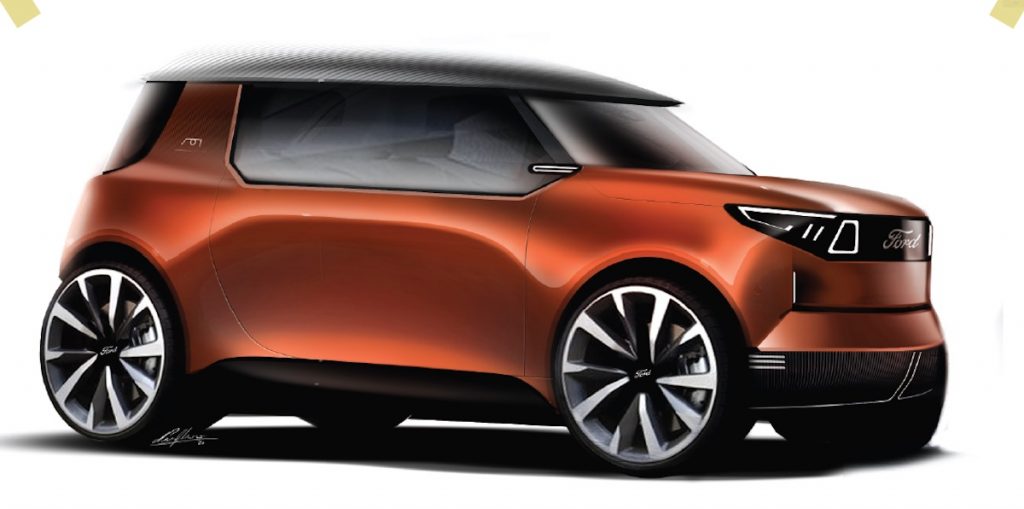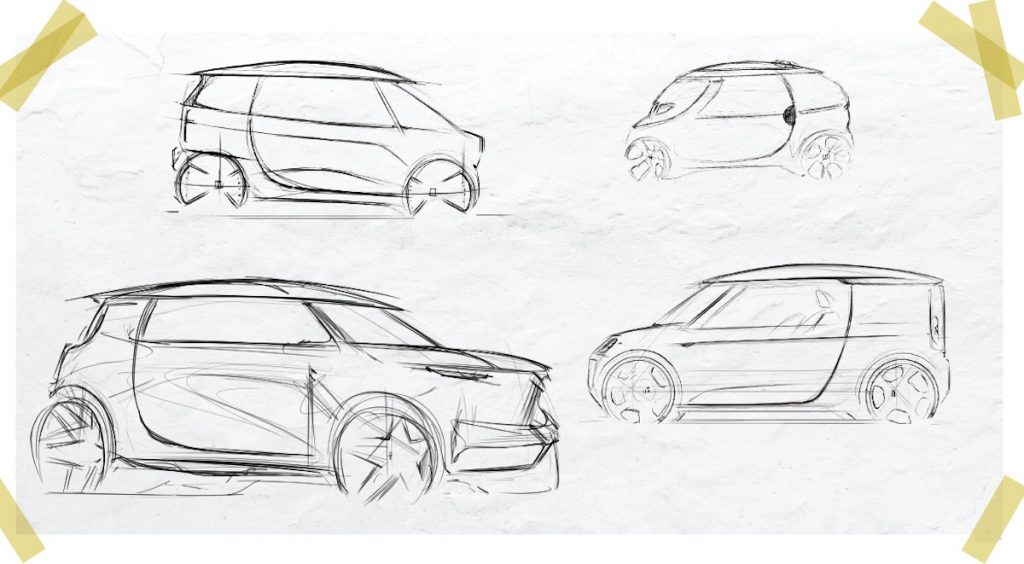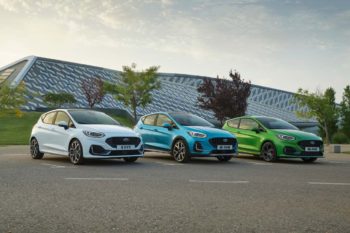Argentinean transportation designer Nicolas Gaudioso who is trained in Italy has designed a next generation personal mobility vehicle. Calling it the ‘CityKa’ the proposal is a next generation Ford mini car for the world market.
“This project was an exercise about how the new Ford Ka could be full-electric for 2025, Gaudioso told ElectricVehicleWeb. “In the era of downsizing and carsharing we need to create some attractions for the new users. The exterior design is developed starting from the sentence “Less is more” by Ludwig Mies van der Rohe, using a clean body and working the metal like a cloth. The inspiration point was the Ford Model T, maintaining the main volumes as primitive shapes and then refining the body.”
Ford is building a crossover based on VW’s MEB platform for the European market to come out next year and they are in talks already for a second car and a third car.
Ford is reported to be exploring different electric vehicles on the MEB platform to strengthen its EV presence in Europe, and the city car market which once Ford had a grip on, has waned in recent years with the failure of two generations of the Ka (first a rebodied Fiat 500 built in Poland, and then the Ford Figo exported from India). However hope is not lost as this segment (which has seen an exodus in Europe due to companies not able to meet regulations at that price point) is expected to be revived by a wave of electric vehicles, the first of which is the Dacia Spring which arrives next year.
With the Mustang Mach-E and F-150 electric pickup, Ford may have a starting point for EV sales in the USA, but globally these wouldn’t help drive up volumes to a point where Ford is seen as an electric brand. A Ka-sized electric car will be perfect for city commutes, where the range could be kept to a minimum and so can be the battery capacity, leading to an aggressive price and thereby mass adoption.
The Renault Twingo ZE is based on the same principle and offers a compact city vehicle with a range of up to 250 km (WLTP City) in a single charge. The Twingo ZE is powered by a 22.5 kWh lithium-ion battery from LG Chem and is driven by a 60 kW motor that makes peak torque of 160 Nm, and can push the car up to a maximum speed of 135 km/h. The Twingo ZE is not from a dedicated EV architecture and if it switches to one (CMF-EV), added space and range could be achieved at a lower cost.
Volkswagen itself is building an entry-level ID.1 on the MEB platform. The VW ID.1 will play a role in Volkswagen’s plan to reach 1 million EVs a year by 2025. VW is expected to offer two battery packs with the ID.1 – 24 kWh with around 175 km range and 36 kWh with up to 250 km of range.
Dacia will bring its own electric city car with the launch of Spring in 2021. A rebadged Renault City K-ZE (Kwid Electric), Dacia Spring is likely have the same powertrain as the City K-ZE and that means a 33 kW electric motor and a 26.8 kWh battery with a range of 271 km (NEDC).
If Ford decides to re-enter the A segment with an electric car, it could be a potential model for India too. India is just opening up to EVs and a budget electric car could be an interesting addition to Ford’s lineup.





![Timing right for Ford Bronco Hybrid as xEV sales soar [Update]](https://electricvehicleweb.com/wp-content/uploads/2021/05/Ford-Bronco-EV-teaser-350x233.jpg)